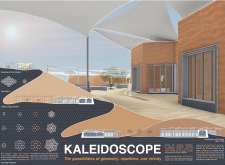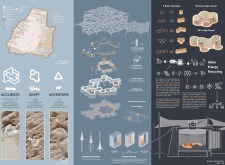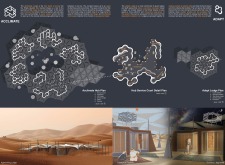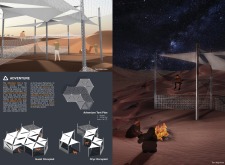5 key facts about this project
At the heart of the architectural design is a well-considered layout that prioritizes user experience. The entryway invites visitors into the space with a seamless transition from the outside environment, promoting an inclusive atmosphere. The careful arrangement of spaces encourages movement and interaction among occupants, addressing the need for both private and communal areas. This duality is crucial in serving the diverse needs of its users, enabling a versatile approach to how the space can be utilized throughout the day.
The choice of materials plays an essential role in defining the architecture. Utilizing reinforced concrete allows for structural integrity while offering a minimalist aesthetic that aligns with modern design principles. The use of large, low-emissivity glazing not only enhances the natural lighting within the interior but also contributes to energy efficiency, reducing the building's carbon footprint. Furthermore, sustainable timber accents are strategically placed throughout the design, introducing warmth and an organic quality that contrasts with the sleek and utilitarian aspects of concrete and glass.
One of the project’s unique design approaches is its integration with the local landscape. Rather than imposing upon its setting, the architecture harmonizes with the existing topography and vegetation. The overall silhouette of the structure complements the horizon, while outdoor spaces provide opportunities for nature engagement. Rooftop gardens and landscaped terraces offer users a chance to connect with the environment, creating an ecosystem that respects and enhances the natural surroundings.
Attention to detail is evident in various elements of the design. Architectural features such as overhangs and canopies not only enhance visual appeal but serve functional purposes, providing shade and protection from the elements. The careful articulation of interior spaces—with thoughtfully placed windows and openings—ensures optimal ventilation and natural light, promoting a healthy indoor environment. The interiors display a cohesive aesthetic, characterized by neutral palettes and subtle contrasts that encourage relaxation and focus.
The project's design scope also includes modern technological integrations, which enhance user convenience and operational efficiency. Smart building systems control lighting and heating based on occupancy, further contributing to energy conservation efforts. This application of innovative technology demonstrates a forward-thinking approach that aligns with contemporary architectural trends, where sustainability and efficiency are paramount.
Moreover, the architectural plan includes provisions for future adaptability, allowing the spaces to evolve as needs change over time. This foresight not only enhances the longevity of the structure but also makes it a resilient presence within the community, adaptable to varying uses without the need for significant renovations.
In summary, the project represents a thoughtful convergence of design, functionality, and ecological sensitivity. It stands not only as an architectural statement but as a beacon of community-focused development, encouraging interaction and fostering a sense of belonging among its users. The architecture invites exploration and engagement, allowing visitors to discover the nuanced details that contribute to its character. To fully appreciate the various components of this project, including architectural plans, sections, designs, and ideas, readers are encouraged to delve deeper into the project presentation for a comprehensive understanding of its multiple facets.


























